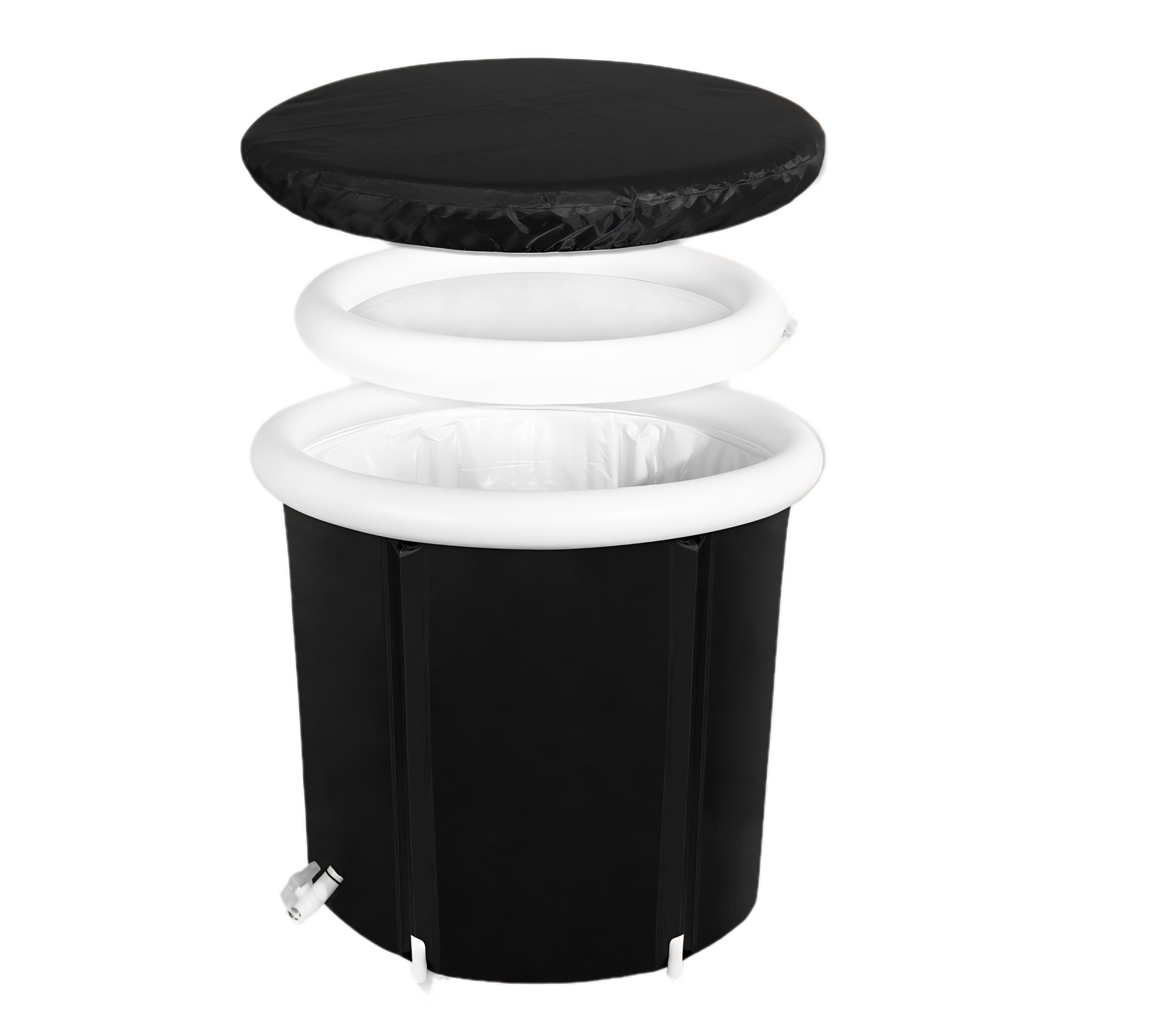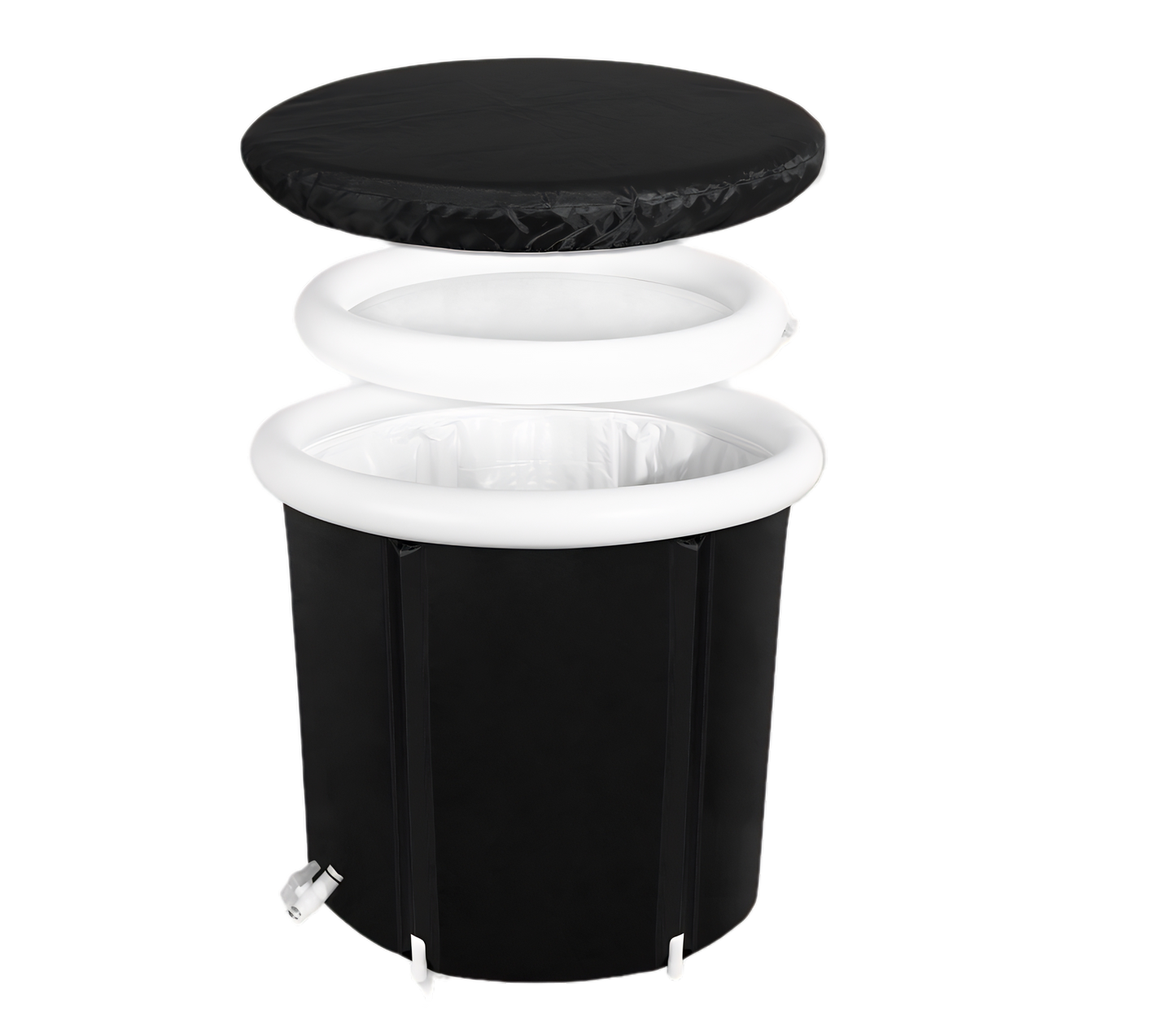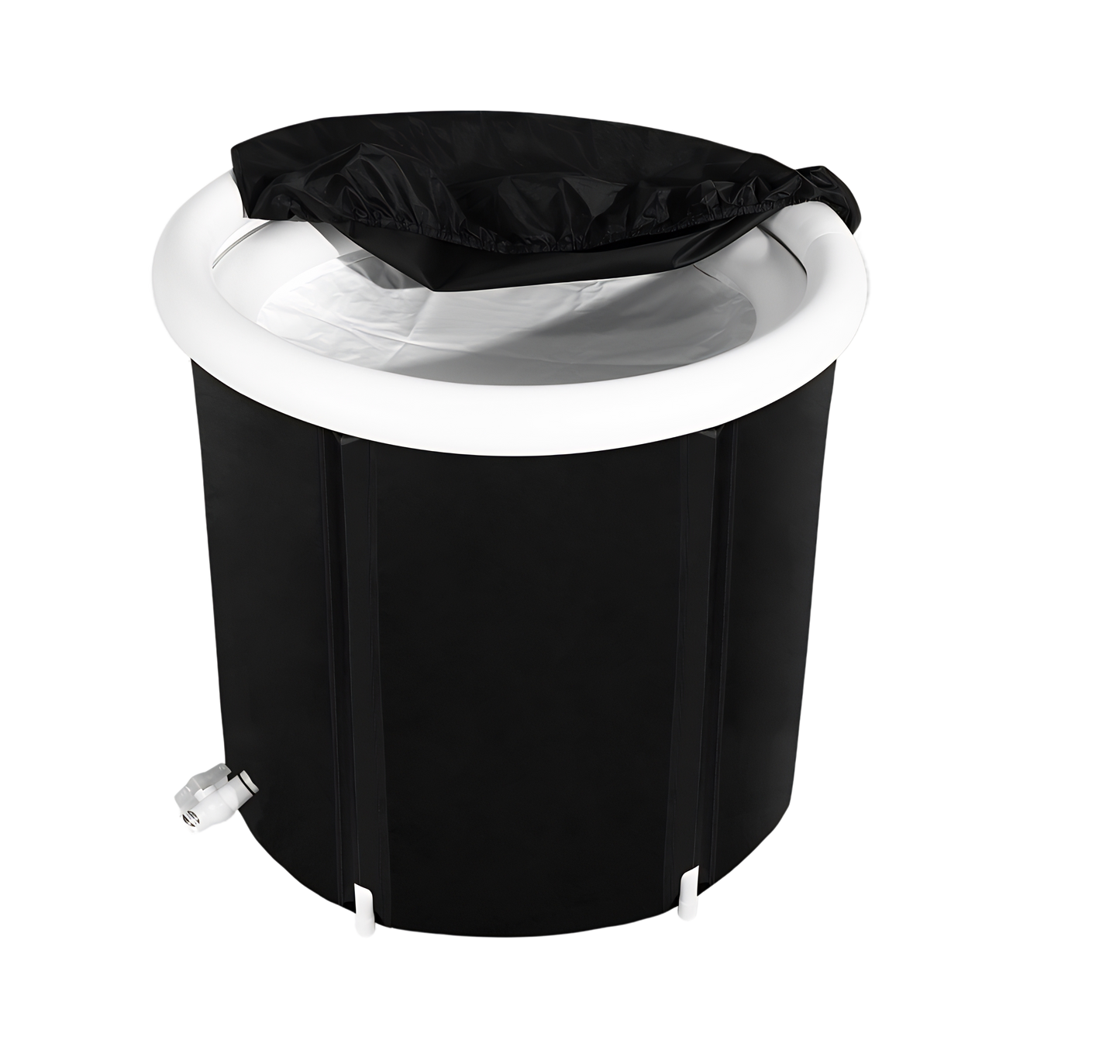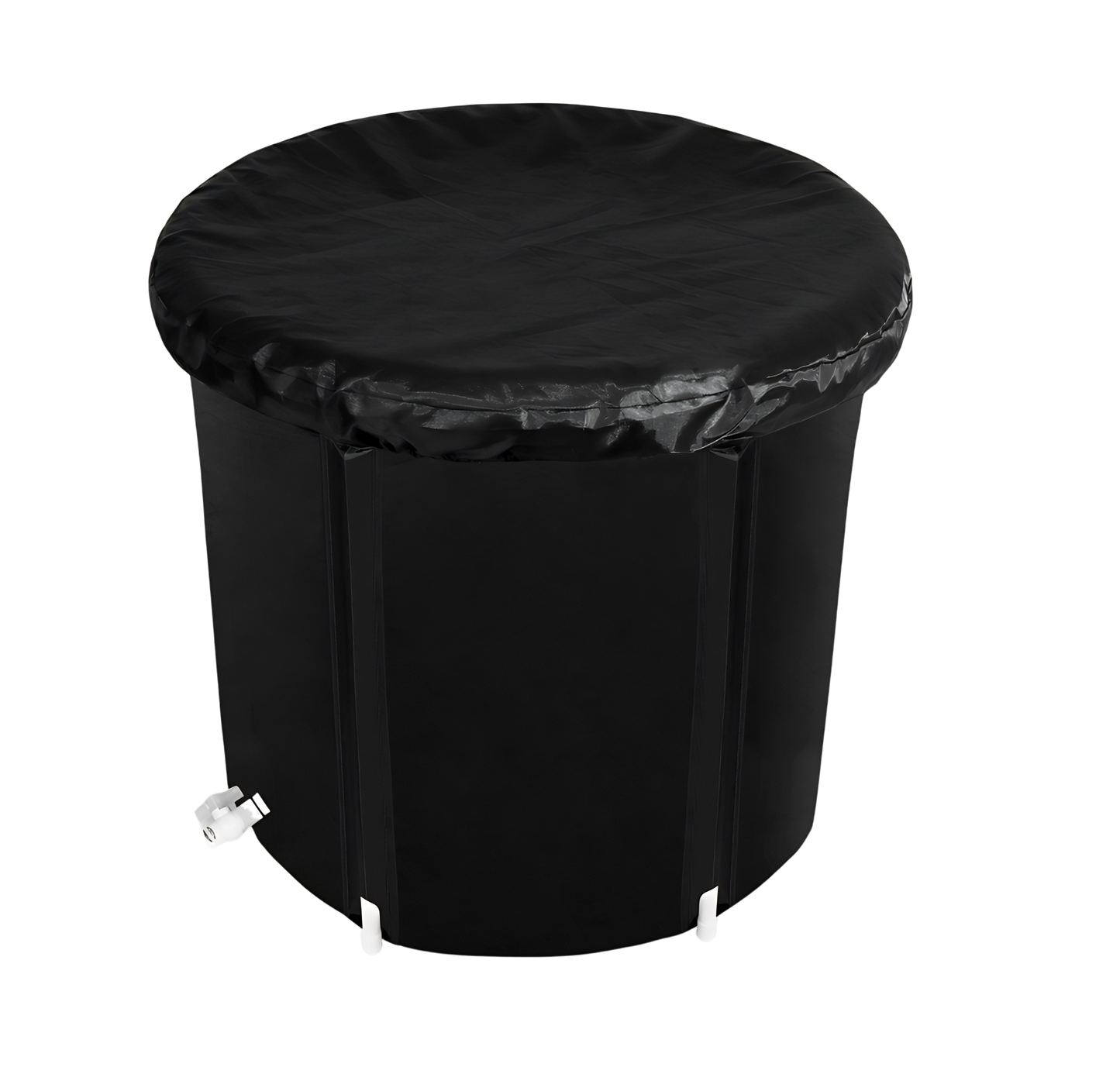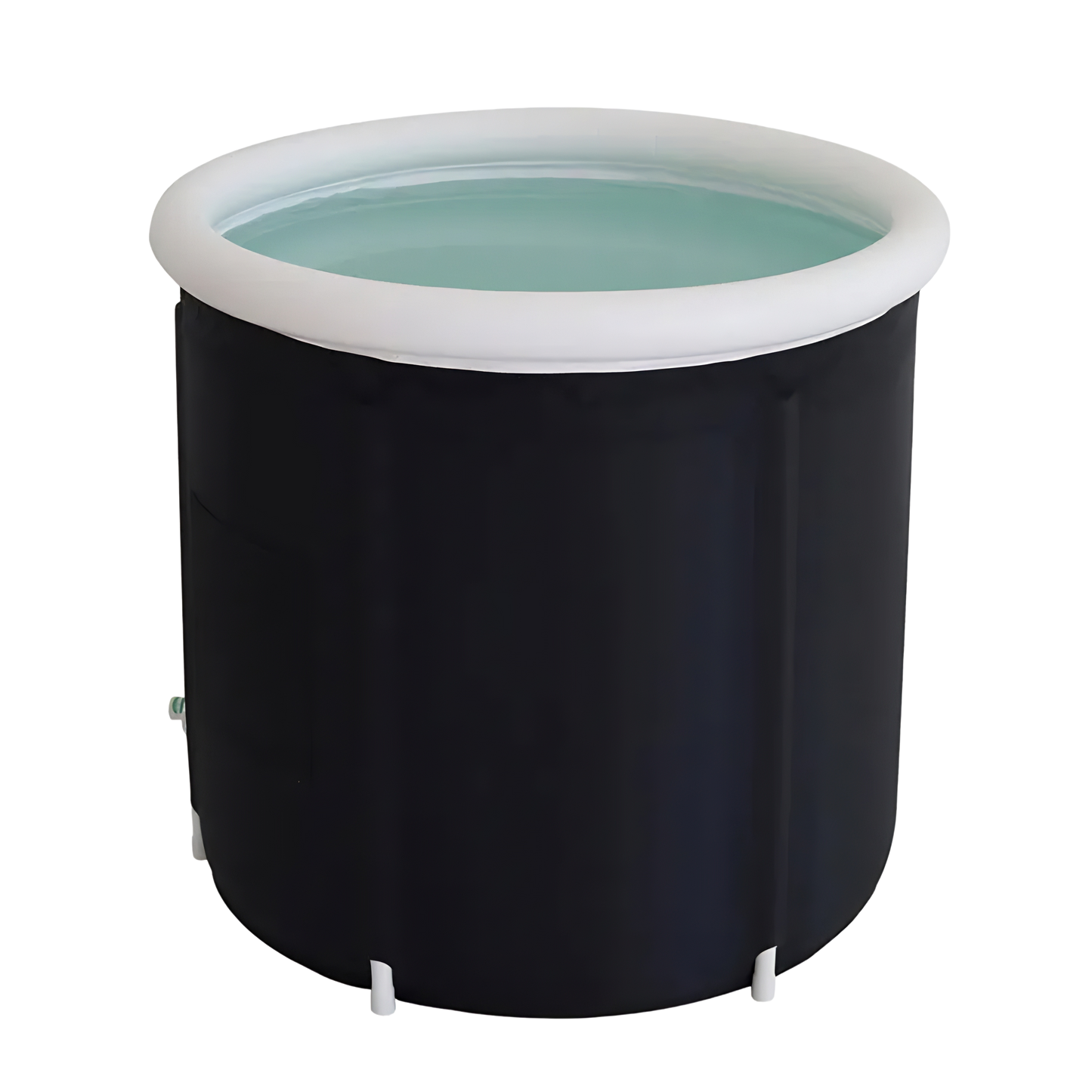Ice baths, also known as cold water therapy, has been found to reduce inflammation in the body. When your body is exposed to cold water, the blood vessels in submerged areas narrow, directing blood to the organs. As a result, more oxygen and nutrients are delivered to the major organs, promoting healing and reducing inflammation. When you emerge from the cold water, the blood vessels expand, allowing the oxygen- and nutrient-rich blood to be pumped back to your tissues, helping to remove waste products and further lower inflammation. Cold water therapy can also strengthen blood vessels over time, improving circulation throughout the body. It can be done at home, in a natural body of water, or at a fitness club or wellness studio. It is recommended to do cold water therapy under the guidance of a healthcare professional for specific conditions such as injury recovery, sports performance, or chronic pain.
Key Takeaways:
- Ice bath therapy, also known as cold water therapy, reduces inflammation in the body.
- Cold water therapy promotes healing by delivering more oxygen and nutrients to major organs.
- Emerging from cold water allows oxygen- and nutrient-rich blood to return to tissues and further reduce inflammation.
- Cold water therapy strengthens blood vessels over time and improves circulation throughout the body.
- It is recommended to do cold water therapy under the guidance of a healthcare professional for specific conditions.

The Research on Ice Baths and Inflammation
Ice baths, a form of cryotherapy, have been extensively studied for their effects on inflammation, a natural response of the body to injury and stress. The scientific community has investigated how submerging the body in cold water after intense physical activity can influence inflammatory processes.
A study by Metzger et al. (2000) examined the impact of cold water immersion on muscle inflammation and recovery. Their findings suggested that while ice baths can reduce muscle soreness, the effect on the underlying inflammatory markers is less clear. The study indicated that ice baths might not significantly reduce inflammation compared to passive recovery over 96 hours post-exercise.
In contrast, a study by Lange et al. (2008) found that cold water immersion effectively reduced the production of cytokines, which are involved in promoting inflammation, thereby suggesting a beneficial role in managing inflammation post-exercise.
Adding to the complexity, research by Śliwicka et al. (2020) on whole-body cryotherapy revealed that inactive individuals experienced a decrease in myostatin, potentially aiding muscle growth, while active individuals saw an increase in vitamin D and a temporary rise in interleukin-6, an inflammatory marker, which normalized after repeated sessions. This study highlights the body's varied response to cold exposure, which may depend on an individual's level of physical activity.
Furthermore, a study by Jansky et al. (2000) delved into the physiological responses to cold water immersion, noting an initial increase in inflammatory markers, followed by a reduction in inflammation after repeated exposure. This adaptation suggests that the body may become more efficient at managing inflammation with regular cryotherapy sessions.
Collectively, these studies underscore a complex relationship between ice baths, cryotherapy, and inflammation. While there is evidence to suggest that cold exposure can influence inflammation, the extent and nature of this effect can vary widely among individuals and across different conditions. It appears that the body's response to cold-induced stress may be beneficial in some contexts, particularly with repeated exposure, but the overall consensus in the scientific community calls for more nuanced research to fully understand these dynamics.
The Role of Cold Therapy in Acute Injury Management
Cold therapy, including the use of ice, is commonly employed in the management of acute injuries to reduce inflammation and swelling. The application of cold temperature has been shown to constrict blood vessels, decrease metabolic rate, and reduce pain. Ice massage, which involves rubbing ice directly on the injured area, can provide localized cooling and analgesic effects. However, it is crucial to note that the evidence for the effectiveness of cold therapy in acute injury management is limited, and further research is needed to fully understand its effects.
One of the main benefits of cold therapy in acute injury management is its ability to reduce inflammation. Cold temperatures constrict blood vessels, reducing blood flow to the injured area and limiting the release of inflammatory molecules. This can help prevent excessive swelling and promote healing. Additionally, the application of cold can decrease metabolic rate, which can help reduce tissue damage and inflammation.
Ice massage, a technique commonly used in cold therapy, offers localized cooling and analgesic effects. By rubbing ice directly on the injured area using circular motions, the cold temperature penetrates the tissues, numbing the area and providing pain relief. This can be particularly beneficial in the early stages of an acute injury when pain and swelling are prominent.
| Benefits of Cold Therapy in Acute Injury Management | Risks and Considerations |
|---|---|
|
|
Cold therapy, including the use of ice, can be a valuable tool in the management of acute injuries. However, it is important to remember that its effectiveness is not fully established, and individual responses may vary. It is advisable to consult with a healthcare professional to determine the most appropriate treatment plan for your specific injury.
In Summary
Cold therapy, such as the use of ice and ice massage, plays a role in reducing inflammation and managing acute injuries. It can help minimize pain, swelling, and tissue damage. However, the evidence supporting its effectiveness is limited, and further research is needed to fully understand its benefits and risks. It is important to seek guidance from a healthcare professional and consider individual factors when incorporating cold therapy into an acute injury management plan.
The Science behind Cold Therapy and Inflammatory Response
The mechanism of action behind cold therapy's effects on the inflammatory response is still not fully understood. However, research suggests that cold temperature can help reduce inflammation by decreasing blood flow and metabolic activity in the affected area. This decrease in blood flow may limit the inflammatory response and alleviate symptoms such as pain and swelling.
One possible explanation for the anti-inflammatory effects of cold therapy is vasoconstriction, which occurs when blood vessels narrow in response to cold temperature. This narrowing of blood vessels can help reduce blood flow to the inflamed area, thereby decreasing the delivery of inflammatory cells and mediators. Additionally, the decreased metabolic activity caused by cold therapy may also contribute to the reduction of inflammation.
"Cold therapy has been shown to help decrease blood flow and metabolic activity in the affected area, which may limit the inflammatory response and alleviate symptoms such as pain and swelling."
Furthermore, research has suggested that cold therapy may also have an analgesic effect, helping to reduce pain associated with inflammation. Cold temperature has been shown to have a numbing effect on nerve endings, which can help alleviate pain sensations.
| Cold Therapy and Inflammatory Response | |
|---|---|
| Effect | Explanation |
| Reduction in blood flow | Cold therapy can cause vasoconstriction, narrowing blood vessels and limiting the delivery of inflammatory cells and mediators. |
| Decreased metabolic activity | Cold therapy can decrease metabolic activity in the affected area, which may contribute to the reduction of inflammation. |
| Analgesic effect | Cold temperature can have a numbing effect on nerve endings, helping to alleviate pain associated with inflammation. |
While these mechanisms provide some insight into the anti-inflammatory effects of cold therapy, more research is needed to fully understand the biochemical and physiological processes involved. Additionally, it is important to note that the effectiveness of cold therapy may vary from person to person, and it should be used in conjunction with other appropriate treatments as part of a comprehensive approach to inflammation management.
The Benefits and Risks of Cold Water Immersion
Cold water immersion has gained popularity for its potential benefits in reducing inflammation, enhancing recovery, and improving circulation. Let's take a closer look at the benefits and risks associated with this form of therapy.
The Benefits of Cold Water Immersion
Cold water immersion offers several potential benefits:
- Reduced inflammation: The exposure to cold water constricts blood vessels, which can help reduce inflammation in the body.
- Enhanced recovery: Cold water immersion promotes the delivery of oxygen and nutrients to major organs, aiding in healing and recovery.
- Improved circulation: Over time, cold water therapy can strengthen blood vessels, leading to better overall circulation.
These benefits make cold water immersion a popular choice for athletes, individuals recovering from injuries, and those seeking relief from chronic pain.
Risks and Safety Considerations
While cold water immersion offers potential benefits, it's important to be aware of the risks and safety considerations:
- Individual variations: People may respond differently to cold water immersion, with some individuals experiencing prolonged vasoconstriction or increased pain.
- Adverse effects: In some cases, cold water immersion can have adverse effects, such as causing a rapid drop in body temperature or exacerbating certain conditions.
- Consultation with healthcare professionals: It is recommended to seek guidance from a healthcare professional before starting a cold water immersion therapy regimen, especially if you have specific conditions or injuries.
To ensure safety and maximize the potential benefits, it's important to follow proper guidelines and receive appropriate supervision when undergoing cold water immersion therapy.
Cold Therapy Beyond Ice Baths: Other Applications
Cold therapy extends beyond traditional ice baths and can be applied in various forms to provide potential benefits in managing inflammation and promoting recovery. Cryotherapy, which involves exposure to extremely cold temperatures, has gained popularity as a treatment for inflammation and muscle recovery. Two alternative forms of cryotherapy, whole-body cryotherapy and gaseous cryotherapy, have also been explored for their potential therapeutic effects.
Whole-body cryotherapy: In whole-body cryotherapy, individuals are exposed to freezing temperatures in a cryotherapy chamber for a short duration, typically 2-3 minutes. This form of cold therapy may have potential benefits in improving antioxidant capacity and cardiovascular autonomic control. While research in this area is still limited, whole-body cryotherapy has gained attention for its potential applications in enhancing athletic performance, reducing inflammation, and promoting general well-being.
Gaseous cryotherapy: Gaseous cryotherapy involves the use of hyperbaric CO2, which is delivered through a controlled system to target specific areas of the body. This form of cryotherapy has been explored as a treatment for acute pain in the elderly. The mechanism by which gaseous cryotherapy reduces pain and inflammation is not fully understood, but it may involve the release of endogenous opioids and modulation of pain receptors.

These alternative forms of cold therapy offer potential benefits in managing inflammation and promoting recovery. However, it's important to note that further research is needed to fully understand their effectiveness and safety profiles. It is also recommended to undergo these therapies under appropriate supervision, as individual responses to cold therapy may vary.
Conclusion
Ice bath therapy, also known as cold water therapy, is a popular approach for managing inflammation and promoting recovery. This therapy has been found to have potential benefits in reducing inflammation and promoting healing in certain conditions.
While the effects of cold water immersion on inflammatory responses in muscle are still not fully understood, some studies have suggested no significant difference compared to other recovery methods. Despite this, cold therapy, including ice baths and other forms of cryotherapy, remains widely used for inflammation management.
It is important to note that individual factors and guidance from healthcare professionals should be considered when incorporating cold therapy into a treatment plan. Cold therapy, such as ice baths and cryotherapy, can be used in conjunction with other appropriate treatments to achieve optimal results in inflammation management.
Overall, cold water therapy and cryotherapy continue to be valuable tools in the management of inflammation, offering potential benefits for recovery and promoting overall well-being.
FAQ
What is ice bath therapy?
Ice bath therapy, also known as cold water therapy, involves immersing the body in cold water to reduce inflammation and promote recovery.
How does ice bath therapy reduce inflammation?
When your body is exposed to cold water, the blood vessels in submerged areas narrow, directing blood to the organs. This promotes healing, delivers more oxygen and nutrients to the major organs, and reduces inflammation.
Can cold water therapy improve circulation?
Yes, cold water therapy can strengthen blood vessels over time, leading to improved circulation throughout the body.
Is cold therapy effective in the management of acute injuries?
Cold therapy, including the use of ice, is commonly used in the management of acute injuries to reduce inflammation and swelling. However, the evidence for its effectiveness is limited and more research is needed.
How does cold therapy work on the inflammatory response?
Cold temperature is believed to decrease blood flow and metabolic activity in the affected area, which may help to limit the inflammatory response and alleviate symptoms such as pain and swelling.
Are there any risks or safety considerations with cold water immersion?
Yes, cold water immersion should be done under the guidance of a healthcare professional. Individual variations in response and potential adverse effects such as prolonged vasoconstriction or increased pain should be considered.
What are some other forms of cold therapy?
Other forms of cold therapy include cryotherapy, which involves exposure to extremely cold temperatures, such as whole-body cryotherapy and gaseous cryotherapy.

